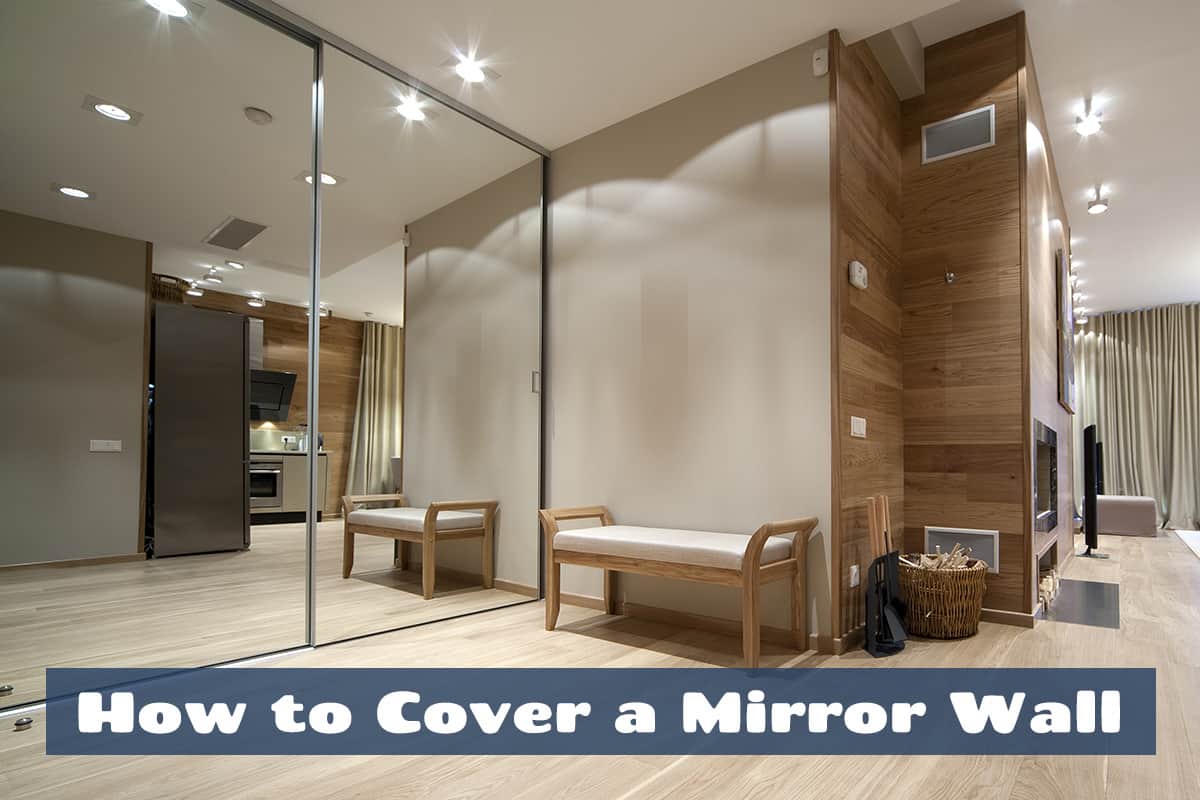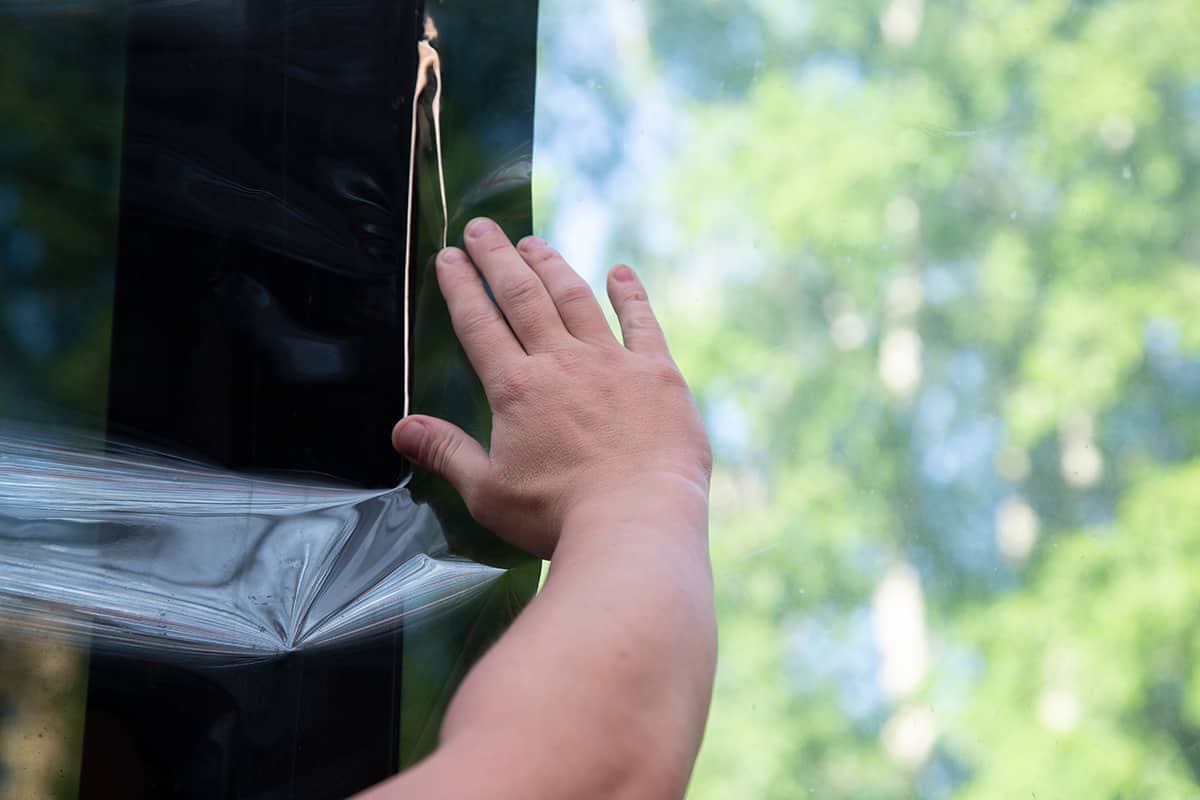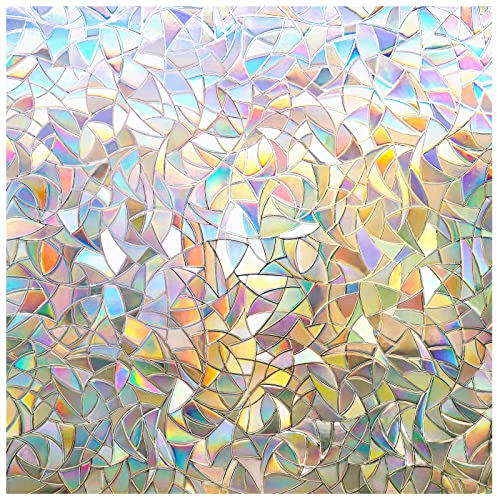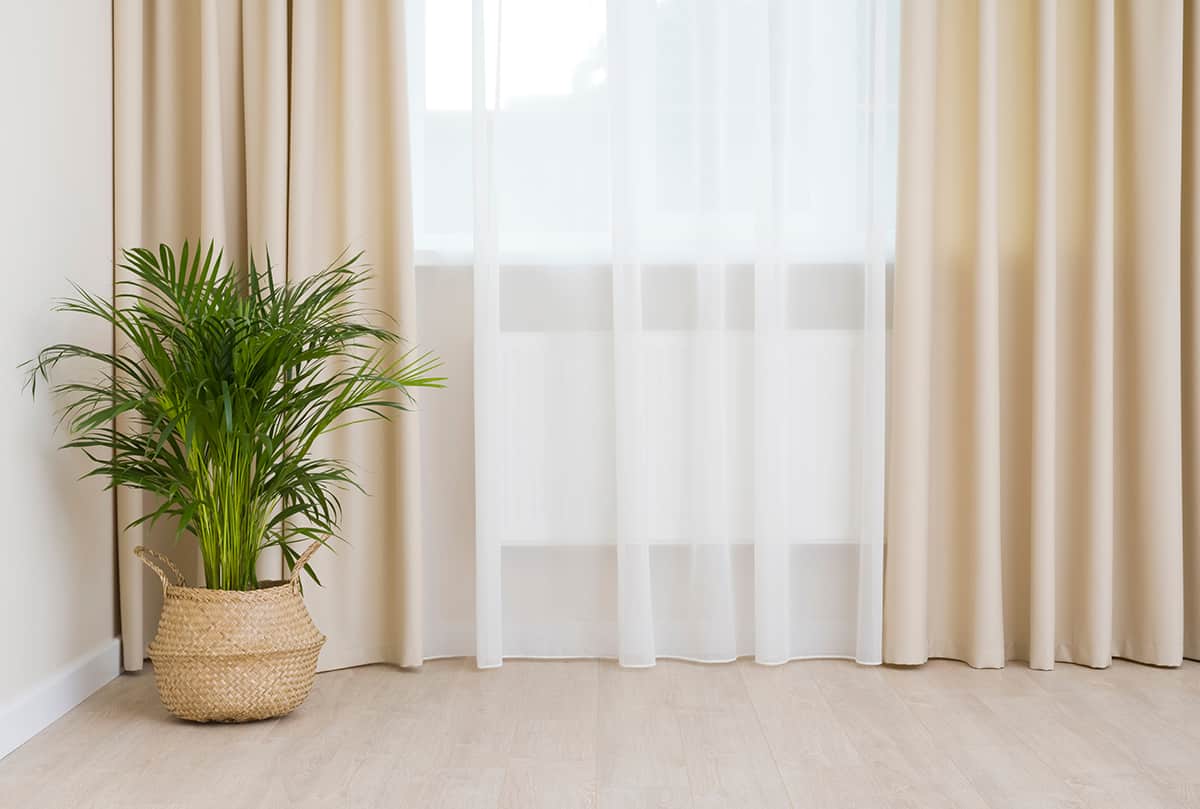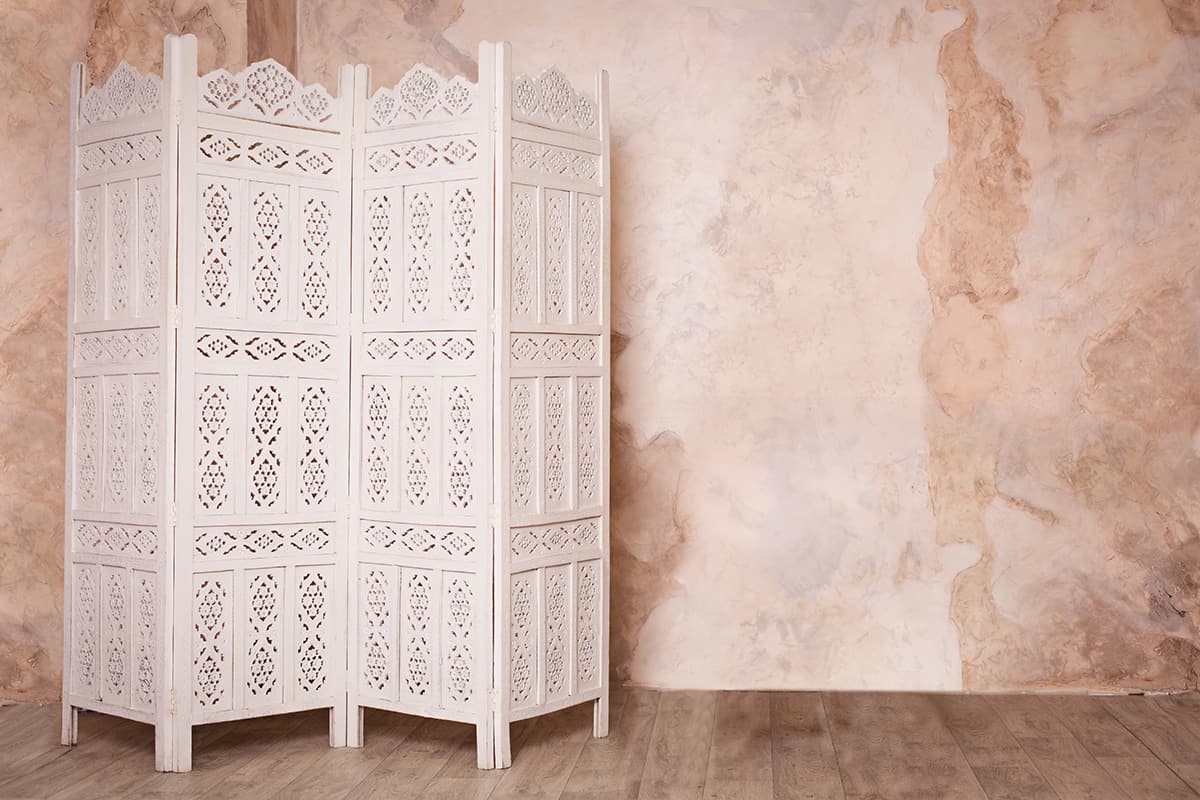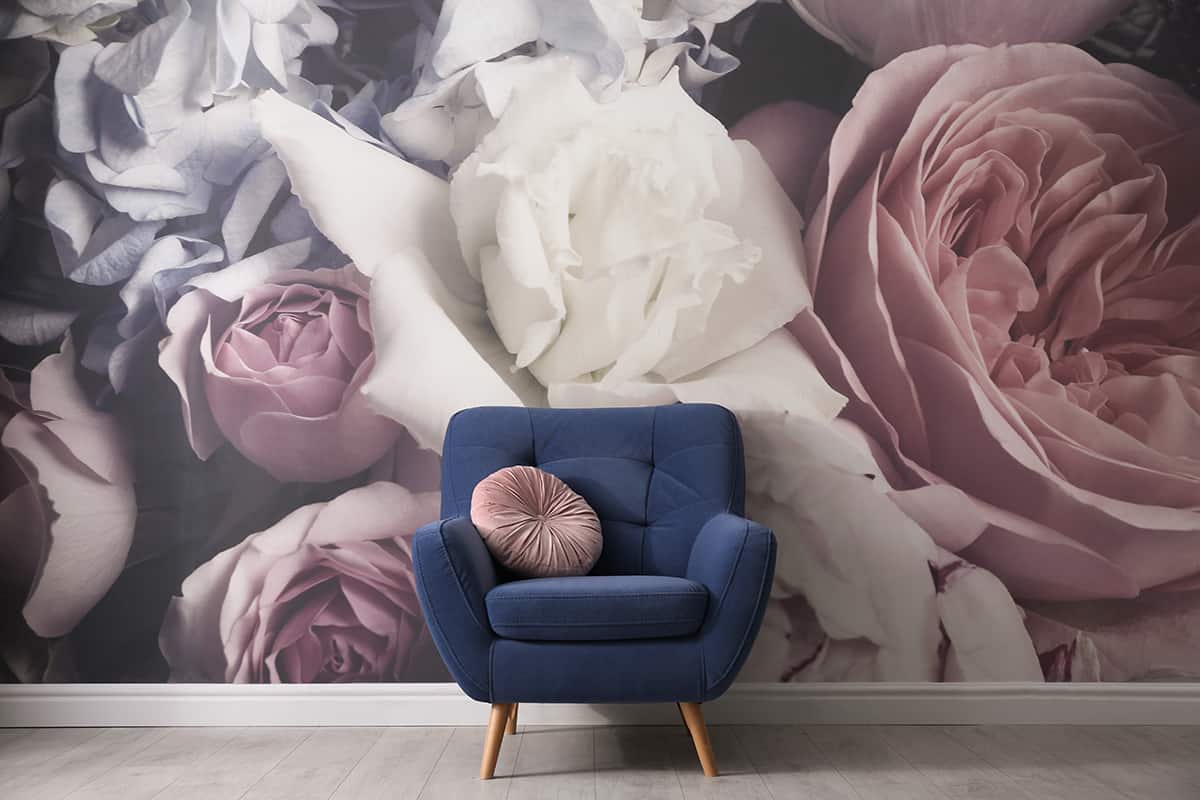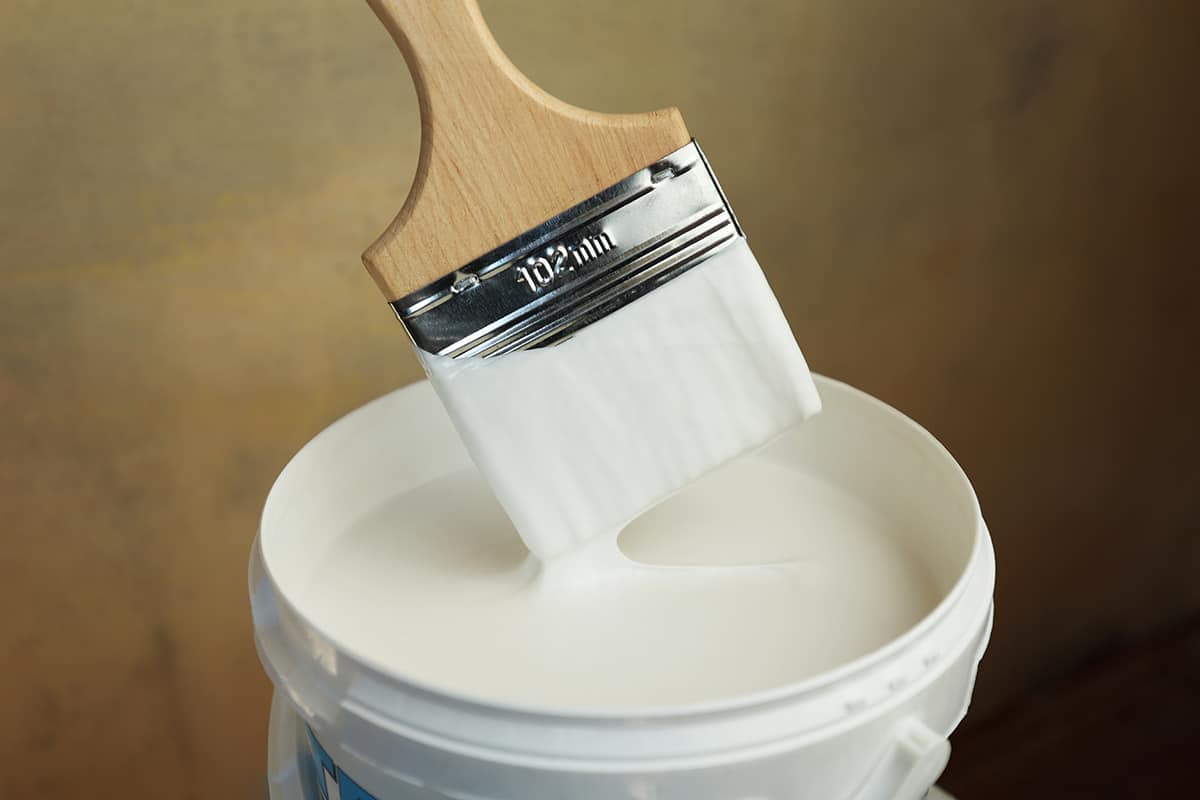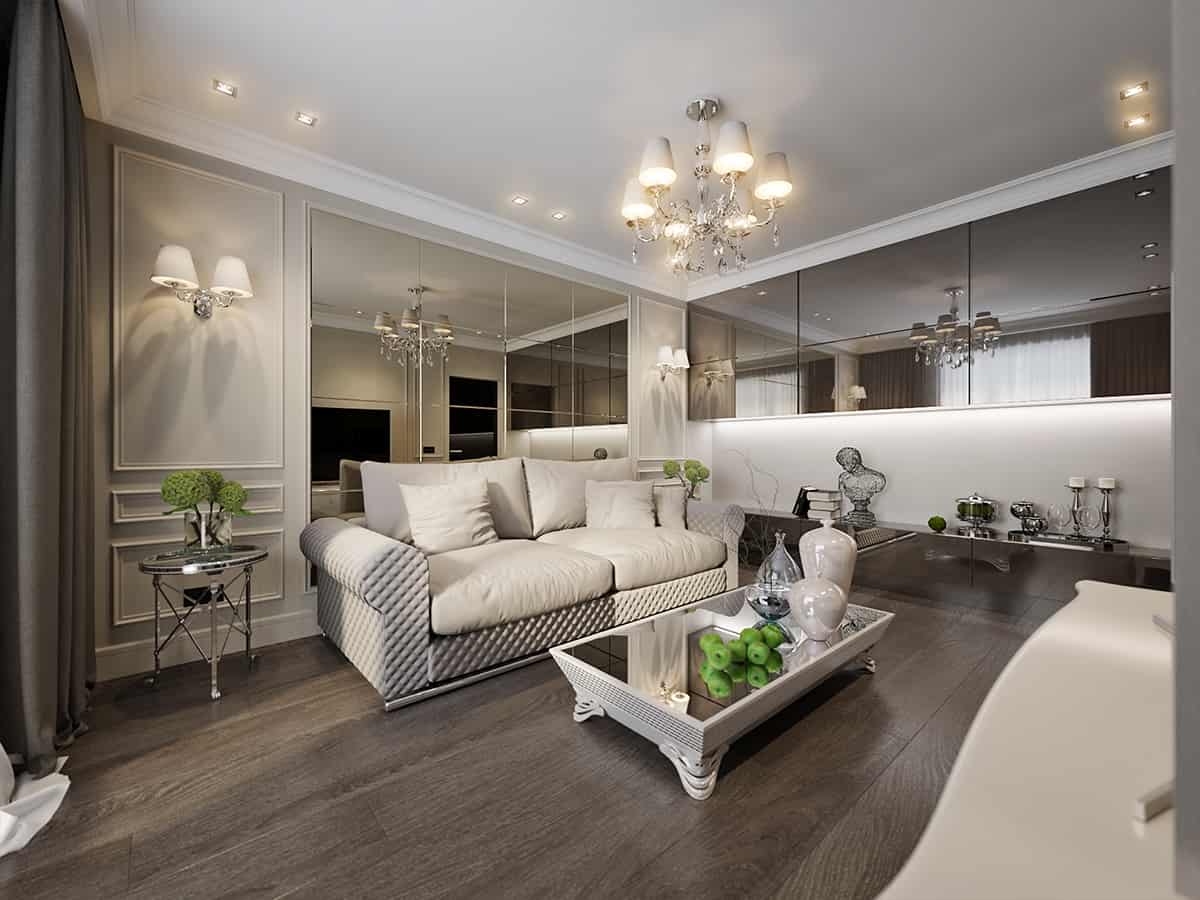Mirror walls can be a practical and appealing feature in a room, but they aren’t to everyone’s taste. If you have a mirrored wall that you can’t stand the sight of, there are a number of ways you could consider covering it.
The best permanent way to get rid of a mirror wall is to remove it, but this is also usually the most expensive and labor-intensive option. If you need a low-budget solution to cover a mirror wall, or you’re in a rental where you can’t make any permanent changes to the property, the following hacks for covering over a mirrored wall could be just what you’re looking for.
Table of Contents
Best Ways to Cover a Mirrored Wall
The best way to cover a mirror wall depends on what you want to achieve and what your parameters are in terms of temporary or permanent changes. Your budget will also dictate the best options for covering your mirrored wall; some of the solutions we explore below are completely free, while others may require some spending.
Window Film
Window film is essentially a type of sticky-back plastic that is typically used to create privacy in windows, but it can also be utilized to change the appearance of mirrors or any other type of glass. Window film comes in a range of patterns, styles, and designs, so you can choose an option that suits your preferences.
Opt for a completely opaque window film if you want to entirely block out the mirror, or choose a pattern that is slightly transparent if you’re happy for some of the mirrors to show through. You can cut window film to size so that your mirror can be completely covered, allowing for customization.
Window film is a great way to cover mirrors if you don’t want to make any lasting changes to the mirror because it can be peeled off easily and will not leave behind any damage to the mirrors. Consider using window film to cover a mirror wall if you think you may change your mind at a later date, or if you’re renting the home and can’t make any permanent changes.
Click here to get this window film from Amazon
Curtains
Covering a mirrored wall with curtains is a great way to add privacy, soften the space, and change the overall look of a room without permanently altering the wall. There are a number of ways you can use curtains to cover a mirrored wall, depending on your skills, your preferences, and your budget.
If the mirror wall isn’t too wide, you can use a tension shower rod to hang your curtain all the way across the mirror. This is a quick and easy fix that doesn’t require any drilling into the wall, making it an ideal choice for renters or people who aren’t keen on DIY. Simply fix the tension rod across the top of the wall the same way you would in a shower and hang your curtains from the rod.
For a slightly more permanent solution, install a curtain rod onto the ceiling above the mirrored wall and hang your curtains from these. You will not be able to install the brackets directly on the mirror, so the ceiling is the best option. Ensure the curtains are an appropriate length to reach all the way to the floor for full coverage.
Opt for curtains that complement your color scheme to elevate the whole look of the room. One of the benefits of this solution for covering a mirror wall is that you can easily pull back the curtains if you want to use the mirror to check your reflection.
Privacy Screen
A privacy screen is a piece of furniture that is also known as a room divider. If you have a privacy screen, you can use it to partially block out a mirror wall by positioning it directly in front of the wall. Most privacy screens will not reach ceiling height, so in most cases, you shouldn’t expect to entirely cover the mirror with a privacy screen.
However, the privacy screen should cover the mirror up to around 6 feet in height, therefore blocking out the reflection of anything up to this height. While you will still be able to see the mirror if you look upwards, it will prevent you from being faced with your own reflection, and the reflection of all of your furniture and decor, which can make the room feel cluttered.
A privacy screen is an easy option for covering the mirror wall if you don’t want to make any permanent changes, and it can easily be moved to another area of the room if you change your mind.
Posters
If you have a mirror wall that you want to cover in a children’s room or a student dorm room, then posters are a fun choice. Select posters or prints of your favorite bands, movies, or TV shows, and fix them directly on top of the mirrors using double-sided tape, glue dots, or blu-tack.
This is a really low-cost solution for covering a mirror wall that can work well for tenants of a rental home if you aren’t allowed to alter or damage the mirror. You can organize the posters in a way that will entirely cover the mirror wall, or you can leave parts of the mirror visible if you prefer.
Wallpaper
Wallpaper is an excellent way to completely cover a mirror wall and make it look as though it was never there. If you aren’t worried about potentially damaging the mirror, you can use traditional wallpaper with paste to apply the wallpaper to the wall, or if you want to be able to easily remove the wallpaper, you can instead use peel-and-stick wallpaper.
This type of wallpaper can be taken off the mirror without leaving any damage behind, making it a good option for renters. You could alternatively fix the wallpaper to the mirror using glue dots or double-sided tape, but the finish will not be as smooth and flawless. By covering your mirror wall with wallpaper, you can hide the mirror while also creating a feature wall in the room.
Choose a wallpaper that coordinates with your furniture and color scheme, or opt for a contrasting pattern to achieve a bold look. You could even wallpaper the rest of the walls in the room to match if you want the mirror wall to really blend in.
Paint
If you want to permanently cover your mirror wall, you can use paint directly on top of it. This will hide the mirror and allow the wall to blend in with the rest of the room. Most types of paint can be used on glass, but some types will adhere to this shiny surface better than others.
In terms of the types of paint you’ll find in your hardware store, latex-based paints will work best. Water-based paints can also work, but you might find that the finish isn’t as good, and you will need more coats. Alternatively, you can use craft paints such as enamel paint or glass paint. These types of paints are designed to be used on glossy surfaces, and they will result in a cleaner finish.
Large Furniture
If you have a number of large furniture items, you could rearrange these in front of the mirror wall to hide them from view. This is great for anyone who doesn’t want to permanently get rid of the mirrored wall because obviously the furniture can just be moved away and the mirror will still be in perfect condition behind it.
If you already have some large furniture pieces, then this method for covering a mirror wall also represents a free solution. In a bedroom, a freestanding closet or wardrobe will be ideal to cover a mirror wall, because these pieces of furniture are typically tall and bulky, therefore able to cover a good portion of the mirror. You can also use tall bookcases lined up next to each other to hide a mirror wall.
Fabric
There are fabric items you may already have around the home that can be repurposed to cover a mirror wall. For example, a table runner can be hung from the top of a mirror wall using glue dots or command strips, adding both color and texture to a room while hiding the mirror.
Tapestries or macrame hangings can also work well. You could also consider making use of a flat bed sheet, or a sofa throw blanket, to cover a large portion of the mirror wall. Adding fabric over a mirror wall will give the room a much softer and comfortable feel since the addition of soft furnishings and textures are able to enhance the coziness of a space and make it feel more lived in.
Choose fabrics that coordinate with your existing color scheme so that there is a sense of continuity, or opt for a contrasting color if you want to make a bold statement so that the fabric stands out and claims itself as the focal point in the room.
